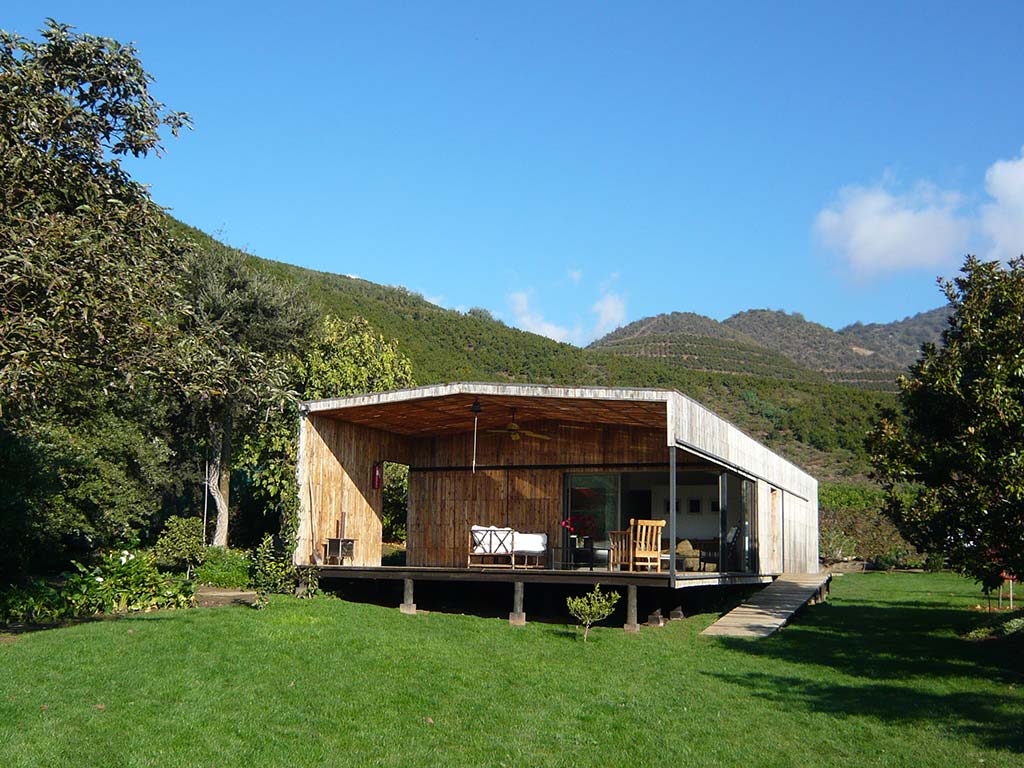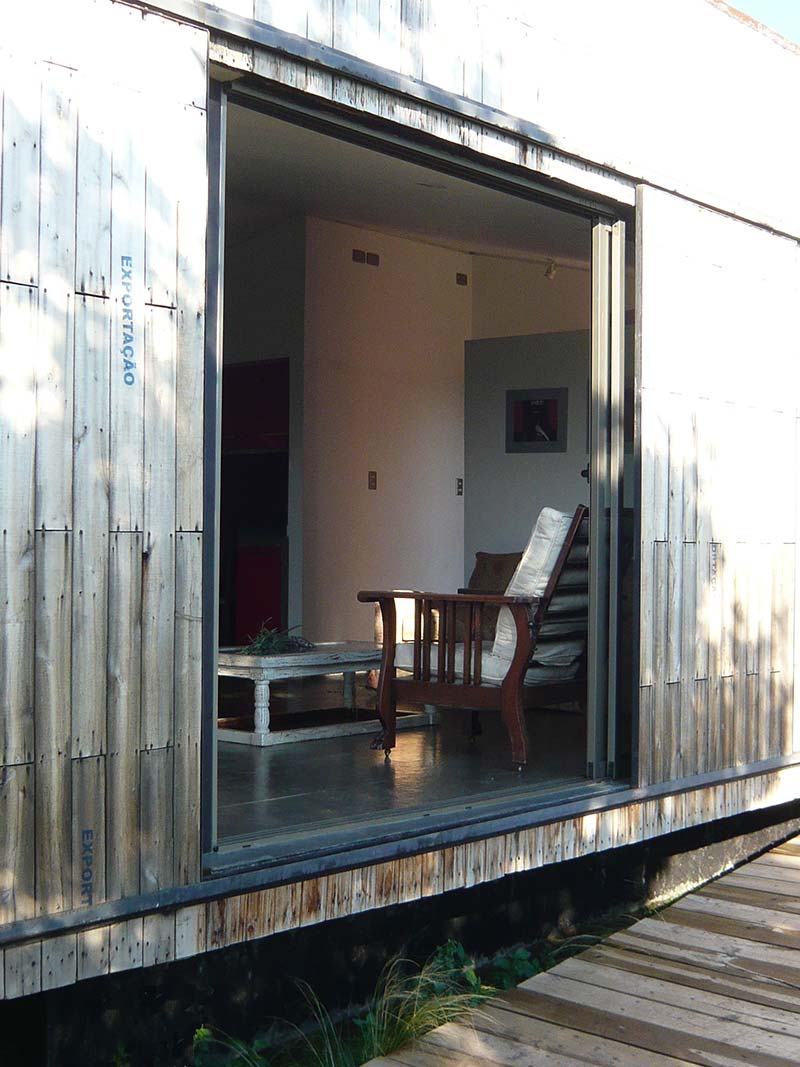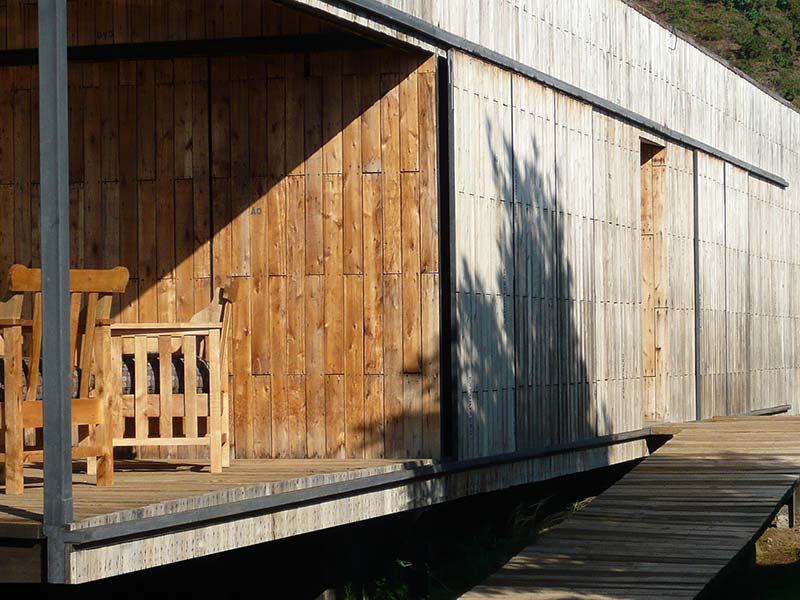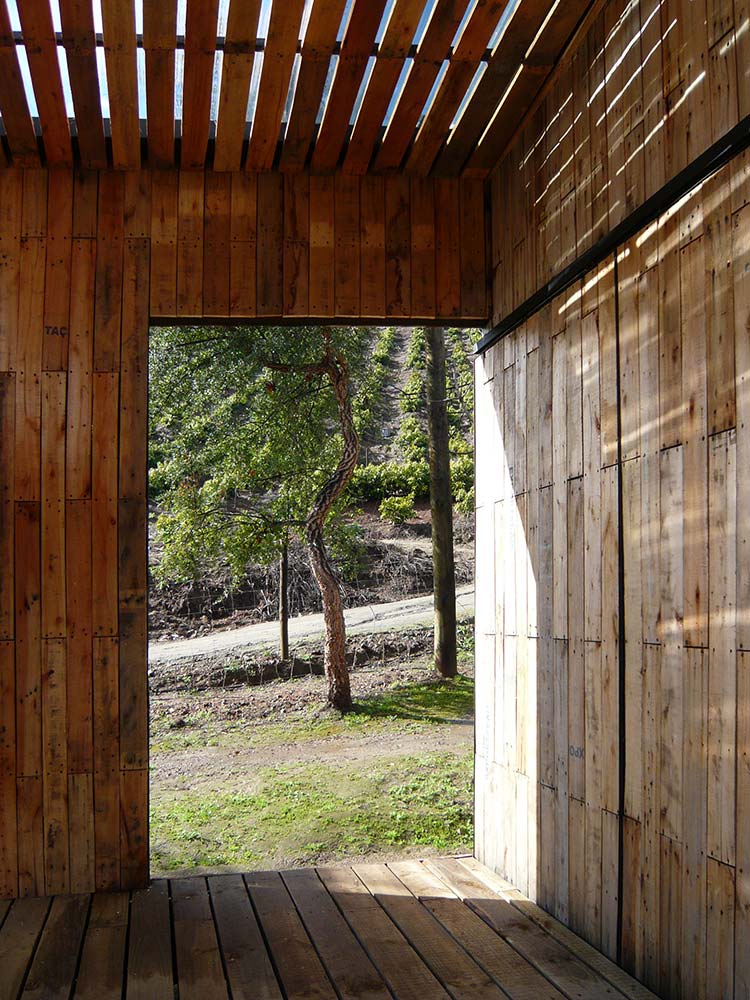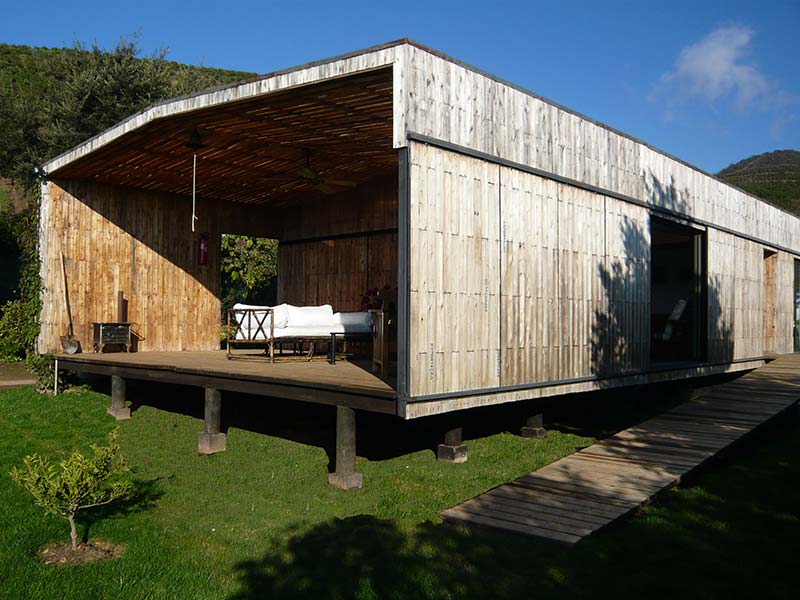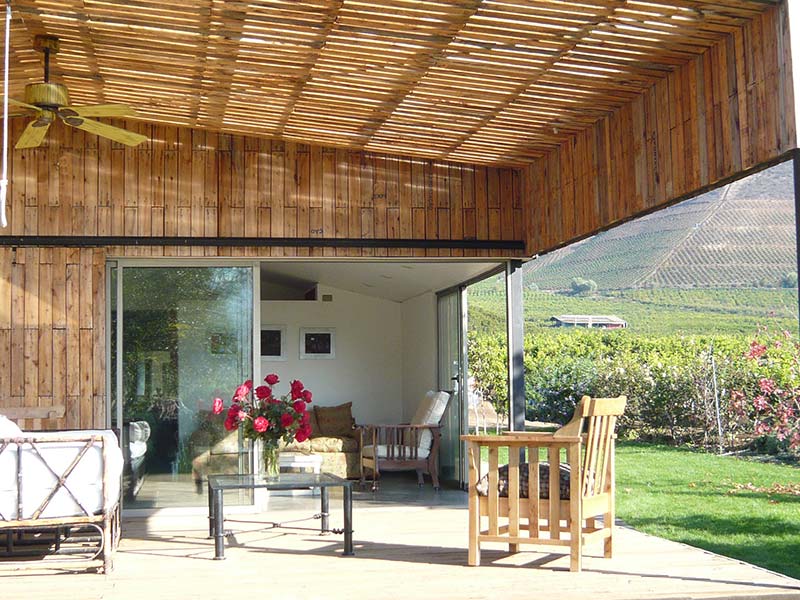Project Details:
Location: Mallarauco, Melipilla, Chile
Type: Residential – Houses
Area: 110m2
Architects: Cristián Irarrázaval Andrews + Magdalena De la Cerda Iñiguez
The assignment consists of a house meant for a farmer, which will be used sporadically by him alone, a few days a week.
As a condition for the project, a low cost solution is required, for which an old welfare wooden cottage placed on site is reused.
The project had to deal with the weather insulation issues from the precarious preexisting cottage, and also practical issues like security due to the sporadic usage it was meant for.
Taking said parameters into consideration, RECYCLING is presented as theme for the project. Complete recycling of the welfare house, reusing its materials for the new construction, and the recycling of wood from disused PALLETS.
The constructive system consists in regular partition walls, made out of 2×3’ pine wood lined in pine with a moisture barrier and a second lining skin made out of disused pallet boards.
This second lining shades and creates an air chamber which ventilates the façade, enhancing the thermal insulation of the house, keeping it cooler during the summer and providing a barrier, to help cope with the freezing temperatures during the winter season.
On the other hand, sliding shutters were designed, in order to protect both the house or the deck from sunlight, wind, cold ando or heat, depending on the user’s needs, providing besides total enclosure for when the house is uninhabited. Also, a double layered roof is presented on the outer deck. Designed to allow the air flow, it provides shade and helps to lower the deck temperature in the summer and insulate from cold temperatures during the winter.
Programmatically, a transformation to the previously existing cottage was presented for the private area of the house (bedrooms and bathroom), while a new kitchen/living room/dining room, duplicating the existing usable surface to 90 Mt2 plus the deck.
In addition to the initial requirements, a service patio was added to the posterior end of the house, along with a secondary bathroom with exterior independent access for the farm workers to use.
Thus, a versatile, programmatically low cost (lower than welfare houses, around USD$400 /Mt2) house was created, made out of recycled materials and of excellent weather performance.

